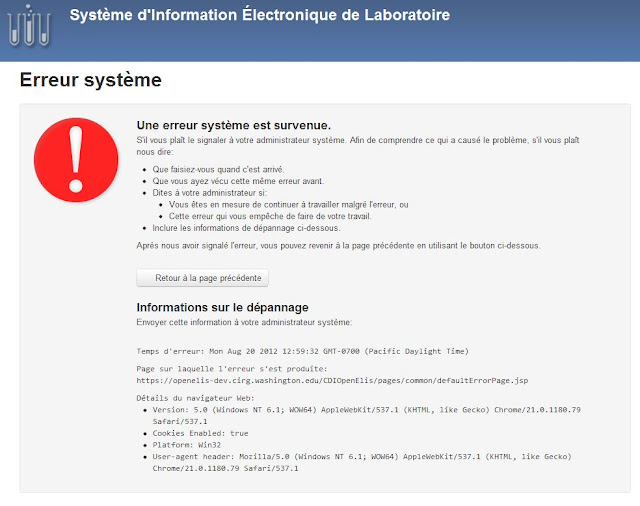Old "GSOD" error page in French:
Old "GSOD" error page in English:
While that sounds good in theory, we learned that what's most important is to figure out what went wrong and get it fixed. By providing more context when someone sees a "GSOD" error, we can get better feedback on what happened. This can make the process of auditing what went wrong much easier for the on-site system administrator and, ultimately, the development team.
To that end, we've redesigned the "GSOD" page to grab details about the user's browser, path through the system, etc. We also tried to include clear action steps that are general enough to make sense at any lab that uses OpenELIS. We also made it a little more appealing to the eyes:
The top section lists steps that the user should take to help report this problem. At the bottom is system information that can easily be copy and pasted into an email or printed. Not shown in this screenshot is the listing for the previous page the user was on before they saw this error—this can be particularly helpful in understanding what happened.
This is a start, but we're doing more work to make the (hopefully infrequent) encounter with system errors more efficient. We'll be adding a separate 404 "Page not found" error message that will have specific reporting instructions. We're also thinking of what, if any, part of the server error log could be included. While that might be helpful, security and privacy remain paramount - we don't want to expose any details that could be used to attack the system if an unauthorized user gained access.
If you have any questions or comments, let us know. And if you think of a better name for this new friendlier, more helpful page than "Grey Screen of Death," we'd be happy to using a term that's a little less morbid.




No comments:
Post a Comment